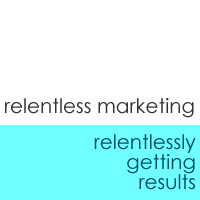







The Relentless Marketer: Is E-Mail Destroying Your Business 
![]()
FORTUNE SMALL BUSINESS, June 2000
By Bill Robinson
Electronic messaging may be dangerous to your bottom line. Here's why.
Not long ago, I met a Disney vice president who seemed like he'd be an excellent client for my marketing firm. At the close of our conversation, I asked him how he'd like me to follow up on our conversation. "Shoot me an e-mail," he said.
Glad to oblige, I thought. But after he made a presentation at the event, which happened to be an e-mail marketing conference, someone asked him how many e-mails he got every day. "About 500," he said. I couldn't resist asking him howmany he responded to. "Two per week," he said.
He gets a phone call, I told myself. Result: I had a chance to pitch him on my idea. Now it's moving through the pipeline at Disney.
One of the trickiest issues for marketers to resolve these days is how to reach out to potential clients who make it clear that they don't want to be distracted by a ringing phone. Interrupt them at the wrong time and you risk becoming a pest to be avoided. Send an e-mail and you'll probably be ignored. How many times have you followed up, only to be told, "No, I didn't receive the e-mail?"
What's a marketer to do? Send an e-mail first. Then follow up by phone. But make sure you abide by some basic principles when you call. They may sound obvious, but you'd be surprised how many seasoned marketing professionals ignore all three -- at their own peril.
1. Have a great opening line. This could be anything from "I understand I have 15 seconds. Is your stop watch ready?" to "Don't worry, I'm not a PR person." Then, state the reason you are calling, in a 15-seconds. If you can do that, no one can accuse you of wasting his time.
2. Do your homework. Know what you are going to say and why the listener would be interested in it before you call. Research your target's organization, customers, partners, investors, and press releases. There's no excuse for not doing this. All you need to do is go the company's Website.
3. Pitch like a pro. Practice what you're going to say before you call. Anticipate possible objections and know how you'll counter them. Be prepared to move quickly to the next step by sending materials or scheduling a meeting.
E-mail is on the path of diminishing returns, big time. The more of it that everybody receives, the less impact it has. A good old fashioned phone call or even a crisp note will generate an entirely different -- and usually preferable -- response. For contrarian marketers, the e-mail tsunami is an immense marketing opportunity. You've just got to be brave enough to seize it.
Copyright © 1994 - 2005 Relentless Marketing